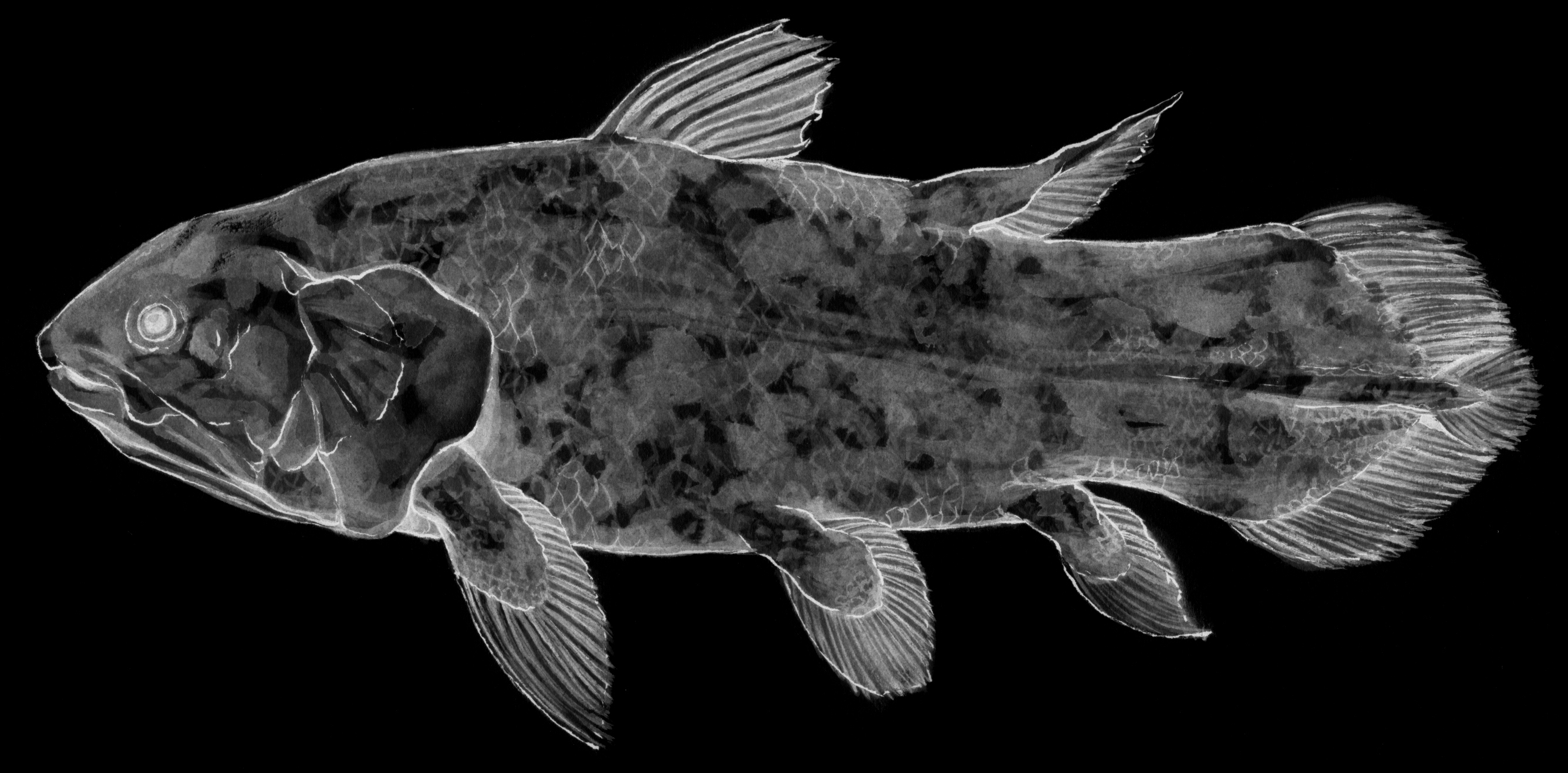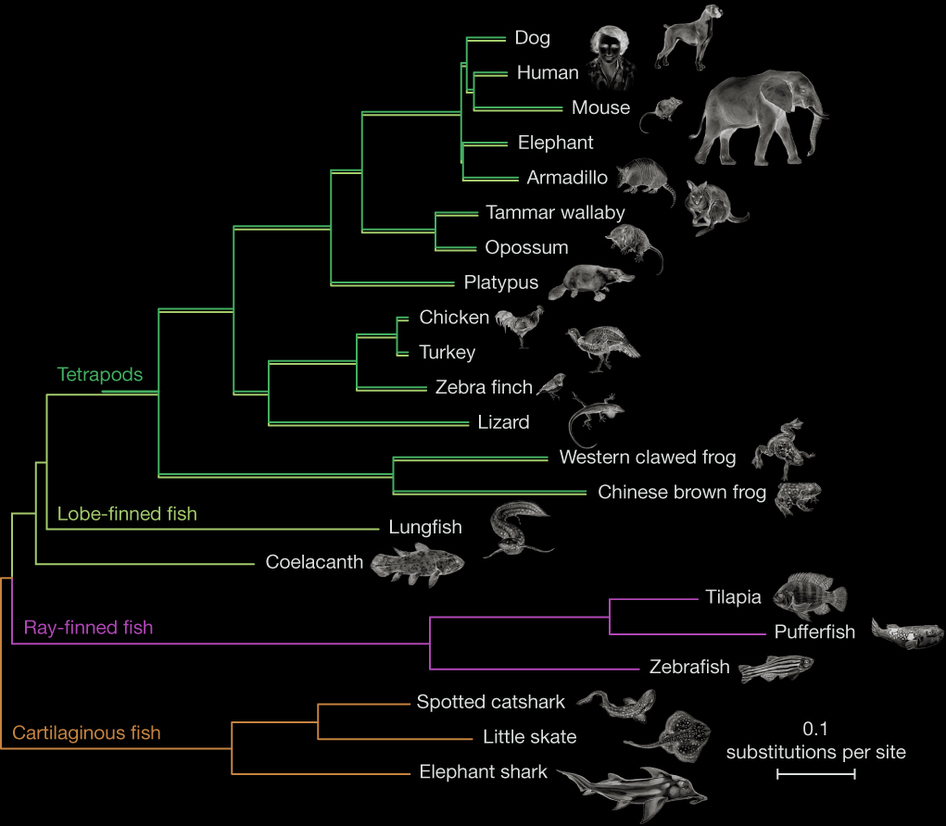Coelacanth morphology and genome has been extremely informative in understanding tetrapod evolution.
Marjorie Courtenay-Latimer was the curator of a natural history museum in East London. In 1938 a local fisher brought a curious fish specimen which was to become a major discovery in evolutionary biology. Latimer described the fish as Latimeria chalumnae. The fish was over 1 m long, bluish in color. Most interestingly it had fleshy fins that resembled the limbs of terrestrial vertebrates.
The discovery was a hugely interesting one. Lobe-finned fishes were thought to have been extinct. Scientists knew them only from fossils and there it was a lobe-finned fish! Coelecanths morphology is amazingly similar to the fossils going as far back as 415 million years. The youngest fossil record of the lobe-finned fishes were dated to Late Cretaceous (70 million years ago). Latimeria continues to be the only living member of the lobe-finned fishes.
A second specimen was discovered 15 years after its first discovery. It again amazed everyone because this time the fish came from the Comoros Islands in the Indian Ocean. In 1997 a second coelacanth species (Latimeria menadoensis) was discovered in Indonesia which showed that descendents of coelecanths were not limited to a particular geographic location. Until now more than 309 individuals have been recorded.
Coelecanth has been considered as our last fish ancestor. This means that it may have been the ancestor of the fish that emerged out of water to colonize land. It is in a way a prequel to the Tiktaalik fossil beautifully articulated in the three part documentary “Your Inner Fish”.
Coelecanth was thought to be extinct through one of the most distinct mass extinction event that took place by the end of the Devonian period known as the Hangenberg event. The mass extinction event was caused by a global glaciation which extended all the way to the tropics. The deep freeze was harsh. It caused depletion of oxygen in the oceans. An estimated 96 percent of all vertebrates including tetrapods became extinct at the end of the Devonian and the beginning of the Mississippian Period. Schoolbus size gigantic fish species of the Devonian got wiped out and throughout the Mississippian, lasted from 359 million to 323 million years ago small bodied fish predominated.
Paleontologists studying fish fossils knew for quite a while that some fish during the Devonian time had evolved to give live birth. The Gogo formation in Australia has revealed exceptionally preserved fossils bearing umbilical chords. The Coelecanth once more confirmed this. As we see in this documentary in a few Latimeria chalumnae specimen embryos were found in them.
Genetic studies have demonstrated how genes control body plans. Fishes have been particularly informative in understanding tetrapod evolution in how fins became limbs.
In 2013 the African coelecanth genome has been sequenced and was subjected to a rigorous comparative analysis with genomes of the land animals.
Coelecanth genome revealed a few suprises. The closest living relative of tetrapods turned out to be the lungfish, not the coelacanth (see the evolutionary tree above).
The coelacanth also lacked immunoglobulin-M (IgM). Immunoglobulin-M, is a class of antibodies extremely important for adaptive immunity. So far IgMs have been reported in all vertebrate species.
In coelecanth instead, researchers found two IgW genes. These immunoglobulin genes are found only in lungfish and cartilaginous fish. This indicates that IgWs must have originated in the ancestor of jawed vertebrates but were lost later in teleost fishes and tetrapods. How do coelacanth B cells respond to microbial pathogens without IgMs? Can the IgW antibodies compensate absence of IgMs? Science will tell.






0 Comments
You can be the first one to leave a comment.